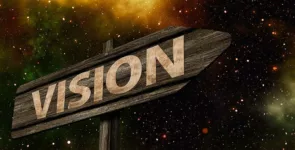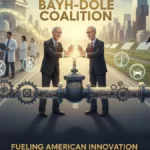To say I’m disappointed in how this all turned out would be an understatement. I believed, and still believe, that on paper, Pat Gelsinger had the strongest set of experience and skills to fix Intel. However, we don’t train people to do turnarounds, and he made a number of critical errors that, were I to write a how-to book on turnarounds, would be in my initial chapters.
Over the years I’ve observed and been on a number of successful and unsuccessful turnarounds. There are ways to do these well but far more ways to fail in this process. The folks that have done turnarounds well include Jack Welch with GE, Louis Gerstner with IBM, and Steve Jobs with Apple.
By the way, Gelsinger accomplished some incredible feats in terms of driving the Chips Act and getting funding for FABs and foundries, but that actually worked against his primary goal of fixing Intel, and we’ll start with that mistake.
Step One: Focus
When doing a turnaround, you need to focus on fixing the foundation of the company first, not expanding the firm. Large companies, and Intel is one of the larger ones, have a lot of moving parts, and if those parts aren’t working well, expanding the company massively will make it harder to fix. It is a case of priorities. Intel had a failing product line that was going to crater revenue. That needed to be priority number one because if revenue falls, it really doesn’t matter what else is going on, the board is going to replace you.
Gelsinger’s execution on what was at best a secondary goal took his focus off of fixing the company’s fundamentals. Those fundamentals bit him in the butt while he was focused on building out the firm’s manufacturing capacity. This isn’t to say that the U.S. doesn’t need that capacity. If there is a war, we have no way to build the microprocessors we’ll need if countries like Taiwan are surrounded by a blockade. But fixing this problem is secondary to Intel because if Intel goes down before these sites can be completed, the U.S. is still screwed.
So Gelsinger failed to keep his priorities straight and lost focus on fixing what was broken by his predecessor in time to save his own job. Given that most turnarounds fail, assuring a positive outcome should have been his only priority. That was consistent with what Welch, Gerstner and Jobs did, which was to fix their companies before expanding them.
Step Two: Create a Strong Marketing Organization
We just had a marketing-driven election here in the U.S. where form won over substance. Both Jobs and Gerstner placed a massive investment on building up world class marketing organizations. This is because perceptions are reality (as we saw from the recent election). Jobs and Gerstner knew they had to sell what they had before they could fix their product lines. Famously, Gerstner had virtually no concept of what IBM built but created one of the strongest tech marketing departments in history.
You need to build support for your undertaking and minimize the voice of your critics. That’s what marketing does. When Gelsinger first worked at Intel, it had one of the strongest marketing organizations in the segment led by Dennis Carter. Had Gelsinger rebuilt that organization or modeled a new one after what Gerstner did at IBM, he’d likely be in far better shape today even if he had done nothing else.
But Intel has underfunded and understaffed marketing for years, leading to brand and trust erosion and leaving Gelsinger exposed to his critics. Sadly, even if he’d executed under the first step without any ability to control Intel’s image, he’d likely still have been at risk because he couldn’t control the perceptions surrounding Intel. While NVIDIA spiked in performance, it made it look like Gelsinger and Intel weren’t performant.
Step 3: Layoffs
I’m not a fan of layoffs. If done poorly, they do more damage than good. However, in a turnaround you generally have to bring costs in line with revenues, and layoffs become a requirement. There is a set of skills that go into doing layoffs well, and both Gerstner and Welch showcased this in their efforts. You cut scientifically and cut deep but only once. I would argue Gerstner did a better job in terms of employee treatment, while Welch did a better job of scientifically doing the cuts (IBM lost several manufacturing lines because it cut the wrong people).
The reason you do a layoff well is you want the employees who were laid off to feel like they were well treated because you may need them in the future and because they often have friends and families who may otherwise act against your best interests. Carly Fiorina did layoffs poorly in California, and when she ran for public office, it was more than coincidental that she lost by a number that would equate to those she laid off and their immediate families.
You also want to treat those that remain well, with a vision of the future that suggests the post-layoff pain will end and that the lucky ones weren’t those that were laid off. Gelsinger did multiple layoffs that reduced his support both inside and outside of the company, and given layoffs are disruptive, made it very hard for Intel to execute timely. Even so, I remain impressed at how well Intel performed despite this failure, which is a credit to those Intel employees that remained.
Step 4: Vision
This was one area Gerstner failed in. It was kind of an ongoing joke with him that he didn’t do the “vision thing.” However, in a turnaround, you need to be able to provide a vision of the future that customers and employees can get behind because that is your light at the end of the tunnel. CTOs generally came about post Welch, Jobs, and Gerstner because back then, the CEO had the vision job. These days, the vision often comes from the CTO. But like several CEOs I’ve known, the whole CTO vision thing got lost (Microsoft’s Steve Ballmer also made this mistake).
You need a strong visionary who can talk about what the world and company will look like post turnaround, and Intel’s latest CTO was more of a COO. One of the strongest CTOs I’ve ever known was from Intel, Justin Ratner, and it amazes me that Gelsinger didn’t pick someone similar to Ratner to be his CTO. Because he didn’t, there was no long-term vision coming from the CTO’s office, thus people (and I’d include Intel’s board) were focused on the problems of today and not distracted by the potential of tomorrow.
My old boss Walt Disney was likely one of the strongest visionaries in history. That guy could make you believe in a glorious future. He even had a song “a great big, beautiful tomorrow.” The way we get through hardships is with hope. Creating a believable vision is the foundation for hope.
Wrapping Up:
This is a column, not a book, and I’m not trying to be critical of Gelsinger as much as trying to convey there is a positive way to do turnarounds. My hope is that the next team at Intel will buckle down and build a solid foundation for a turnaround. Lisa Su turned AMD around, showcasing it can be done (though I’ll grant that AMD Is far less complex than Intel is), but IBM was a complex mess, and with no technical background, Gerstner turned it around by following all but one of these steps (the Vision thing).
Intel can be turned around, but it will take someone that will take the time to set the right priorities and use the lessons demonstrated by those few CEOs who have done it successfully. Here’s hoping Intel’s next team gets it right. I believe Intel does have a great big, beautiful tomorrow; it just has to seize it.








